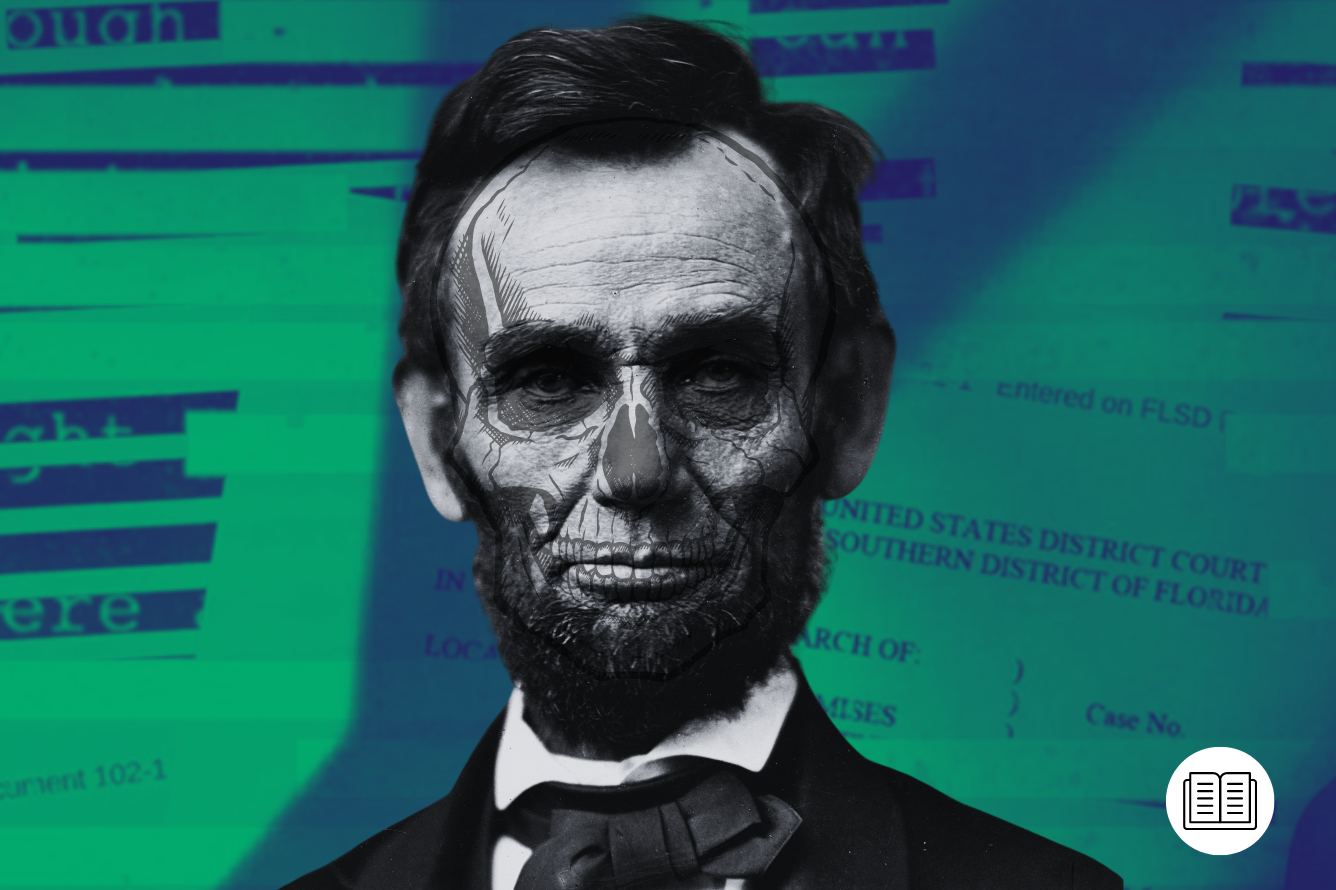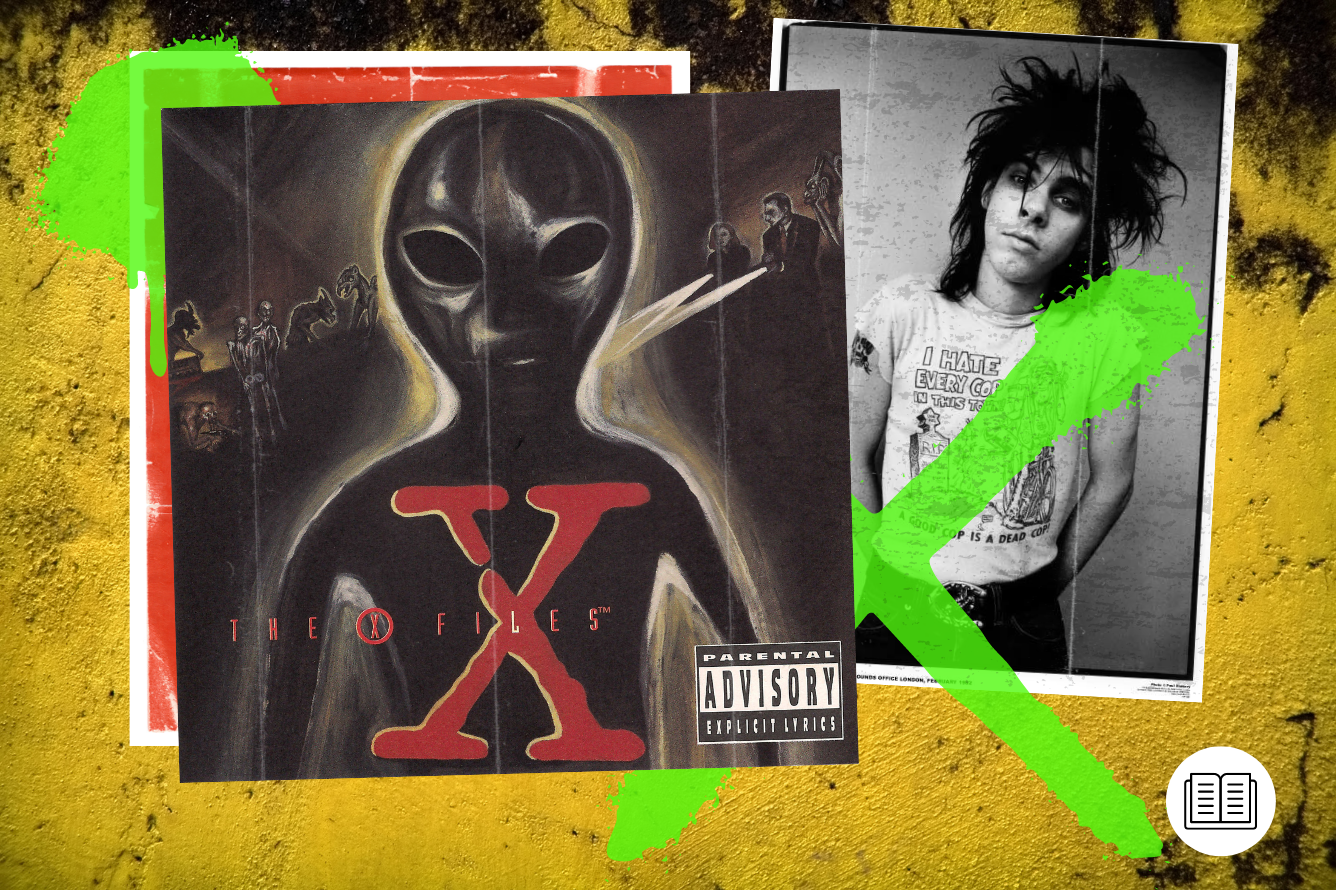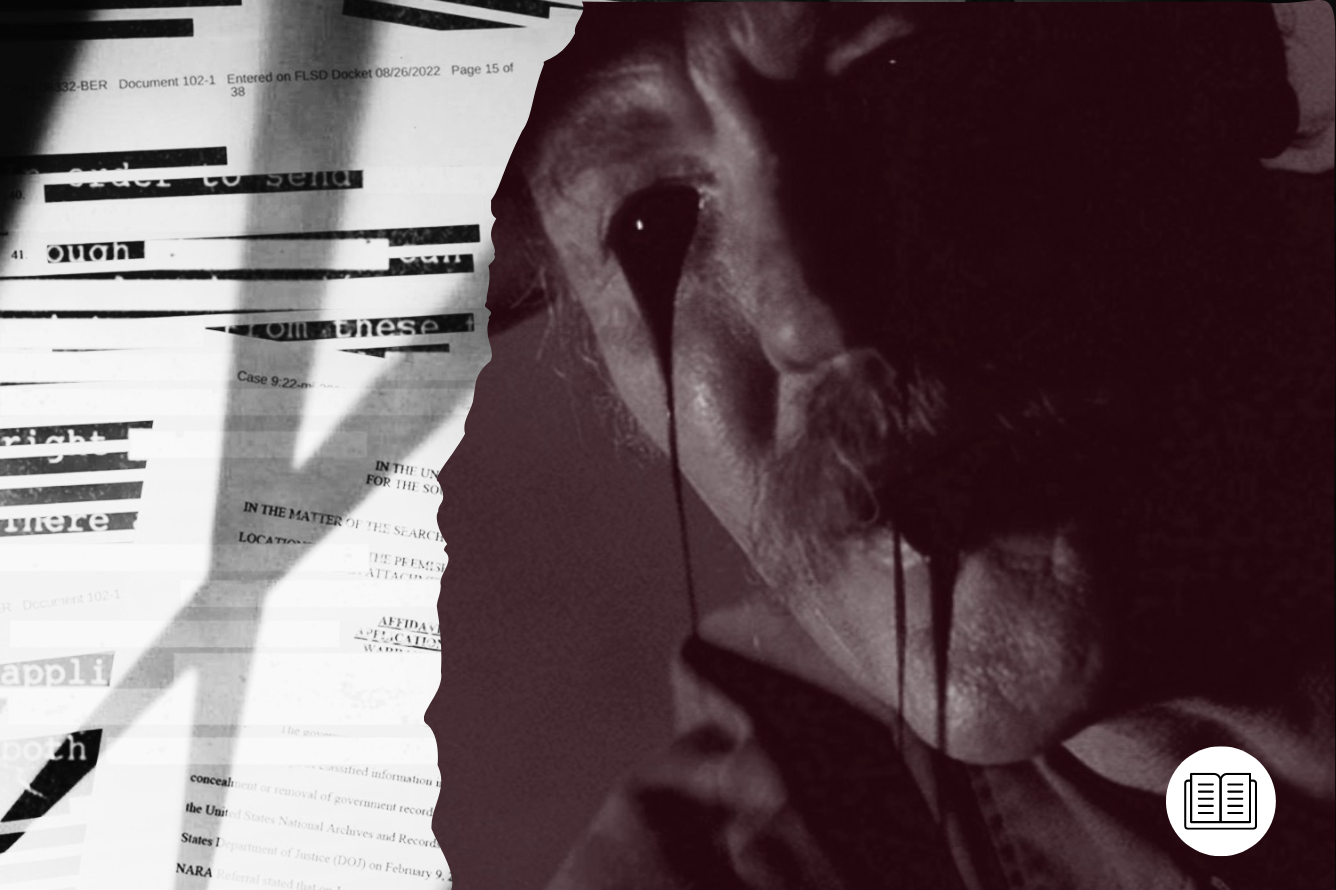The history of many TV shows is littered with ideas that never came to fruition. Monica and Joey getting together in the first seasons of Friends, Jesse Pinkman dying in the first season of Breaking Bad, the Horn of Winter doing anything at all in Game of Thrones…
The X-Files was no exception. However, the sheer volume of episodes made — 218 in all — and the complexity of the show meant that while some ideas never made it beyond initial suggestions (there was a running gag in the writers’ room about Vince Gilligan’s idea for an episode about a man being held hostage on a Tilt-A-Whirl) most of the ones that had a bit of work put into them ended up being used. In some cases, ideas that had been batted about for a while were revisited years later with fresh eyes and reshaped to make more sense, or merged with another half-developed idea to create something new. As executive producer Frank Spotnitz wrote in 2012, “surprisingly few concepts that we actually managed to develop didn’t eventually make it to screen in one form or another.”
But there was one that never made it to screen: an episode written by Glen Morgan and James Wong in which Mulder (David Duchovny) and Scully (Gillian Anderson) encounter the ghost of Abraham Lincoln.
Glen Morgan and James Wong in The X-Files
Morgan and Wong were incredibly important to The X-Files finding its feet, writing the first monster-of-the-week episode in ‘Squeeze’ (S1, Ep3) – which also features one of TV’s all-time greatest character-establishing lines, in which Mulder, his hands covered in Tooms’ bile, says “Is there any way I can get it off my fingers quickly without betraying my cool exterior?” – as well as introducing Skinner (Mitch Pileggi), the Lone Gunmen, and Scully’s family.

During the show’s first four seasons, Morgan and Wong co-wrote 14 episodes, including fan favorites like ‘Home’ (S4, Ep2) and ‘Beyond the Sea’ (S1, Ep13). They left after season two to work on their own show, Space: Above and Beyond, returning after its cancellation to work across both The X-Files and Millennium for half a season, and developing both a feature script for a remake of The Fantastic Voyage and another show of their own, The Notorious 7, for the rest of the year.
(The Notorious 7 has not been widely seen and was by all accounts a completely bonkers show, centered on the rivalries between seven mob-style families, each of whom represented one of the Seven Deadly Sins. Also, it may have been set in hell.)
Before they left, Wong told Cinefantastique how much he appreciated the pace of their work on The X-Files, saying, “We spent as much time as we could making it as perfect as we could. The attention to detail was so great because nobody was pushing us to turn over the show.”
However, on their return, their larger, more disparate workload took its toll, with the pair unable even to catch up properly on all the episodes that had been made in their absence. The show had changed in their absence, with Wong describing their return as feeling “like we were left behind […] It was like, ‘Hey, guys, do you remember who we were?’ and people were almost too busy doing their own thing to take a moment to acknowledge that.” Morgan was also going through a divorce, something which added greatly to his stress and anxiety levels.
But they came up with ideas — the blacker-than-black inbreeding horror of ‘Home’, the wistful past-lives romance of ‘The Field Where I Died’ (S4, Ep5), and… the Lincoln one. Spotnitz says the idea has stuck with him, writing: “I always wondered about a story idea Glen Morgan and James Wong had that they never wrote, about the ghost in Lincoln’s bedroom.”
The Supernatural History of Abraham Lincoln
Since Lincoln was assassinated in 1865, there have been many reported sightings of his ghost haunting the White House. A picture taken of his widow, Mary Todd Lincoln, in 1872 purported to show the dead president standing behind her with his hands on her shoulders. It was a hoax, of course, a double exposure by the photographer William H. Mumler, famous for his spirit photography.

Mrs. Lincoln’s interest in spiritualism predated her husband’s murder. The pseudoscience of communicating with the dead emerged prior to the Civil War (1861 – 1865) and was propelled to new heights by the grief unlocked by the bloodletting. For Mrs. Lincoln, it was the death of their 11-year-old son Willie in 1862 that drove her to seek solace in séances. The White House Historical Association states that Mrs. Lincoln held as many as eight séances on the property, and her husband was present for some of them despite being reportedly less taken with their content.
Mrs. Lincoln wrote to her half-sister:
“Willie lives. He comes to me every night and stands… with the same sweet, adorable smile he has always had. He does not always come alone. Little Eddie [their younger son who died aged four in 1850] is sometimes with him… You cannot dream of the comfort this gives me.”
Understandably, her husband’s sudden and shocking death in her arms made the widow an easy mark for con artists like Mumler, but the damage was done.
Decades later, figures as powerful and credible as President Theodore Roosevelt, First Lady Grace Coolidge, and Prime Minister Winston Churchill reported encountering the ghost of Honest Abe. Queen Wilhelmina of the Netherlands, according to one story, fainted when she encountered the ghost.
Mulder and Scully Go to the White House
While The X-Files traveled extensively around the US episode to episode (with first Vancouver and then Los Angeles doubling for everywhere), Mulder and Scully worked in Washington, DC, in the basement of the J. Edgar Hoover Building. The other iconic governmental building that frequently featured (usually as a host to shadowy goings-on courtesy of the Cigarette-Smoking Man) was the Pentagon, showing up in a dozen or so episodes — the White House itself only featured in one episode: ‘Three Words’ (S8, Ep16), penned by Chris Carter and Frank Spotnitz.
The politics of The X-Files are complex but largely non-partisan, presenting the government as a powerful entity that exists largely independently of whoever is in the White House. In 2018, The Verge described the show’s political perspective as having “the post-Watergate view that parts of the government were probably up to no good.”
However, Bill Clinton, president for the majority of The X-Files’ original run, was a frequent presence in the show, due both to his portrait hanging in the office of FBI Assistant Director Walter Skinner and occasional mentions.
References are made to his sex scandal, as well as his infamous insistence that he “tried marijuana but didn’t inhale”. George W. Bush, the new president at the end of the original run, was originally supposed to appear (played by an actor) in the finale episode ‘The Truth’ (S9, Ep20). The scene was shot and features Alan Dale (as the nameless figure known in the script as Toothpick Man) handing Bush a note. Bush reads it, asking “What do you want me to do? I thought this was being handled. The truth is out there now.” “The truth has always been out there, Mr. President,” replies Toothpick Man. “The people just didn’t want to believe.” He leaves, and Bush stares out of the window at the Washington Monument. Whether due to the hokiness of having an actor play the president, or the slight clumsiness of dropping two of the series’ catchphrases within a few seconds of each other, the scene was cut.
‘Musings of a Cigarette-Smoking Man’ and Too Many Dead Presidents
‘Musings of a Cigarette-Smoking Man’ (S4, Ep7), written by Morgan and directed by Wong, debut solo outings for both of them, was by all accounts a troubled episode. Morgan and Wong felt creatively stymied by Carter and the other producers, with many of the ideas they were most attached to (including the Cigarette-Smoking Man shooting Frohike of the Lone Gunmen dead in the final minutes) being rejected.

There were endless clashes — William B. Davis, who portrayed the Cigarette Smoking Man, hated the script. Chris Carter hated several elements of it and changed the title from the original ‘Memoirs of a Cigarette-Smoking Man’. Wong secretly shot the scenes involving Frohike’s murder, but the film reels containing the footage mysteriously went missing. Morgan’s script went through so many versions, with so many people involved, that he ended up incorporating editorial meddling into the episode itself, with wannabe author CSM horrified that the ending of his story has been changed.
Some fans also hated it as it contradicted several elements of the show’s canon (due to Morgan and Wong not remembering some of the events of the third season and subsequently, in Wong’s words, “looking like idiots.”)
The pair felt burnt out by the experience. Morgan later said:
“When I was doing 24-episode shows, and that includes The X-Files, we knew that three were going to suck, just because you couldn’t focus that much. It’s just really hard, even with a 22-episode season. People get annoyed with me for saying this, but in all honesty, out of 22 episodes a year, four were great, most were okay, and some of them sucked! And that’s just how it goes!”

The next episode they were meant to do was their Lincoln’s ghost one, but after feeling like they were put through the wringer with ‘Musings of a Cigarette-Smoking Man’, they were reticent to use an idea that meant a lot to them if it was going to end up being taken out of their hands and transformed into something else entirely. “I had done a lot of research and I had always wanted to write a feature about Lincoln’s ghost,” Morgan told Cinefantastique. “But I felt they didn’t want my heart and soul anymore, so I wouldn’t give this one to them.”
Given that ‘Musings of a Cigarette-Smoking Man’ had also featured a presidential assassination, with CSM himself pulling the trigger to kill John F. Kennedy (and then smoking his first cigarette, one given to him by Lee Harvey Oswald) — it’s also not out of the question that two episodes on the trot featuring dead presidents may simply have felt like too much.
Never Say ‘Never Again’
The retooled episode, ‘Never Again’ (S4, Ep13) — the one in which Scully gets an Ouroboros tattoo that is never seen or mentioned again — does have one tangential connection to presidential assassinations. A tattoo that speaks to its owner, compelling him to kill, is voiced by Jodie Foster. In 1981, 26-year-old John Hinckley Jr. attempted to assassinate President Ronald Reagan in an attempt to impress… Jodie Foster.
Hinckley Jr. had been obsessed with the film Taxi Driver (1976) in which traumatized veteran Travis Bickle (Robert De Niro) – who protects child prostitute Iris Steensma (Jodie Foster) – attempts to kill a presidential candidate.

Lincoln-related snippets occasionally came up in Morgan and Wong’s work. The Millennium episode ‘The Curse of Frank Black’ (S6, Ep6), which they wrote, begins with a quote from Lincoln himself, speaking after the death of his son: “Do you ever find yourself talking with the dead? Since Willie’s death, I catch myself every day, involuntarily talking with him as if he were with me.” (In 1998, the same year, Millennium star Lance Henriksen played Lincoln in a made-for-TV movie, The Day Lincoln Was Shot). Final Destination 3, directed by Wong and written by the pair, made several references to Lincoln’s assassination (along with those of John F. Kennedy and William McKinley), such as a subway station being named after his killer John Wilkes Booth.
The End of an Era… and the Chance of Seeing Lincoln’s Ghost
The Morgan/Wong pairing came to an end after their 2006 remake of Black Christmas. Wong went on to direct Dragonball Evolution and a TV remake of Rosemary’s Baby, as well as working extensively on American Horror Story. Morgan worked on several shows including Intruders, Bionic Woman, and Jordan Peele’s Twilight Zone reboot.
Morgan later told Vulture, “I was getting older, and I just wanted to do a certain type of thing. I was in search of a different kind of thing than he was, and then I was like, ‘Why should I bring you down?’ It was friendly. […] There was no animosity. It was just like, we had achieved all these things, and he wanted to go that way, and I wanted to go this way. And that’s what we did.” While they both worked on the revived X-Files series, they did so separately, each writing and directing an episode in Seasons 10 and 11 (and directing another in Season 11).
With the partnership over, and The X-Files unlikely to ever return, it seems we’ll never see the Lincoln’s ghost story come to fruition. Perhaps that’s a good thing — left unseen, it’s a tantalizing mystery, a what-if, an idea bursting with potential unencumbered by reality, that maybe seems better the less we know about it. While Morgan and Wong would be more likely than most to do a great episode based on the premise, it’s hard to imagine an X-Files episode about the ghost of Abraham Lincoln that isn’t at least, well, slightly silly. There are ghosts, and there’s the ghost of one of the best-known people in history. Mulder calling a ghost a “tall-hatted son of a bitch” in the Oval Office is certainly a fun image, but that would be very hard to follow. Where do you possibly go after ghost-hunting the guy off the five-dollar bill in the halls of the White House?
This article was first published on October 10th, 2022, on the original Companion website.
The cost of your membership has allowed us to mentor new writers and allowed us to reflect the diversity of voices within fandom. None of this is possible without you. Thank you. 🙂









